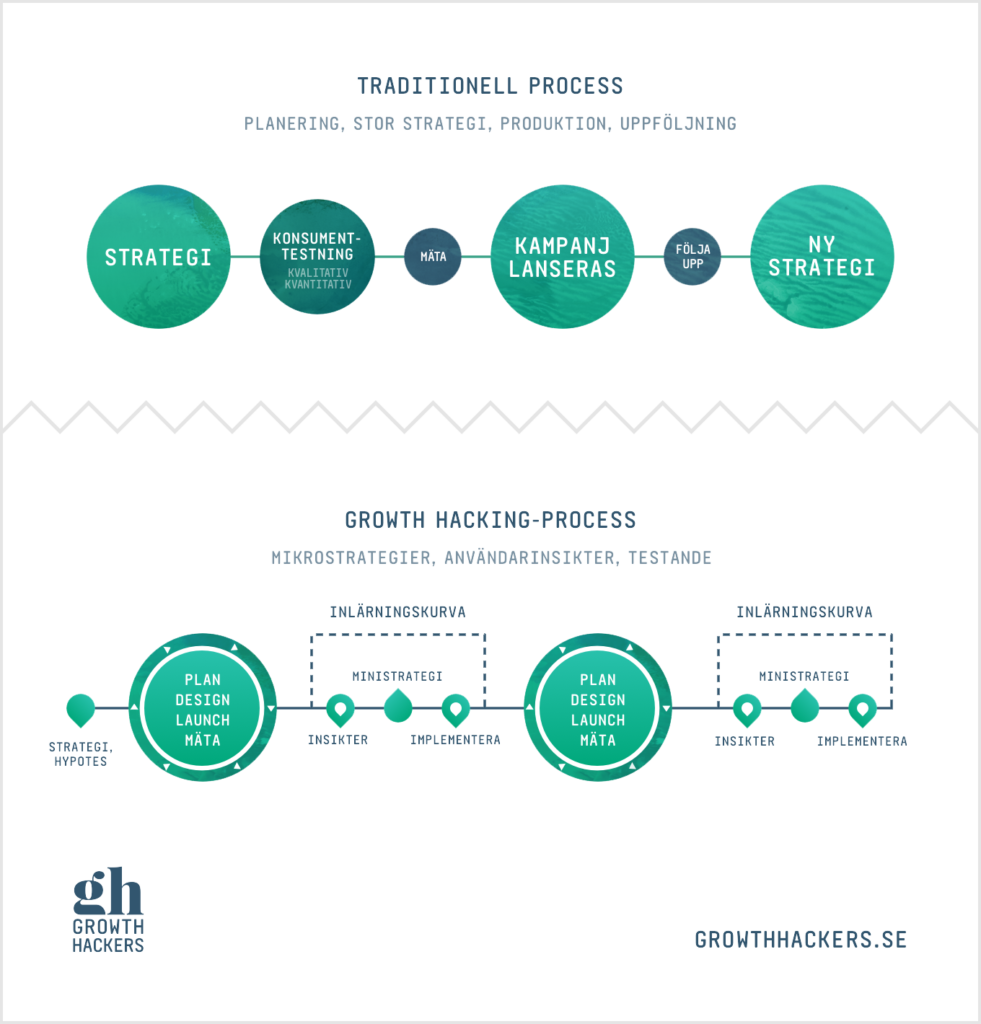What does successful growth hacking look like?
Last Updated on February 7, 2022 by justin
Article 2 in the series “Why you need to know about Growth hacking”.
In part 2 of the article series “Why you need to know about growth hacking”, we dive deeper into how to work with growth hacking, what the effects will be and which success factors are central. If you have not read part 1 yet, it is here: “What is growth hacking?“.
Successful Growth Hacks
First, some examples of classic and common growth hacks which are the result of having growth hacking as a mindset.
Twitter – suggested people to follow when registering
When Twitter realized that users who followed more than 30 people were most likely to become repeat users, they optimized the service to encourage this behavior.
Hotmail – “ps. I love you” tagline
Adding the tagline, (Ps. I love you. Get Your Free Email at Hotmail) at the bottom of all emails sent from their accounts, which in an era where email was not something that everyone had, made them go viral.
McDonalds – a restaurant at every exit (pre dot-com growth hacking)
In the ’50s, a McDonald’s was opened at every exit of the highway (Inter state) in the United States due to the realization that if they did not, someone competing would open, and it was still worth the cannibalization to compete with oneself before others.
Nokia – the game “snake” pre-installed on the phones
When mobile phones broke through and became popular among young people, Nokia pre-installed the game “snake”, which became a hit and proved to be more important than the competitors’ often technically better products.
How to find your own growth hacks?
The most famous growth hacks, as it is often written about, are often associated with a “quick fix” or with a business leader with guru status. The more reasonable answer, which becomes quite clear if you evaluate successful companies, is, however, that it is a way of working – a process – which in its simplest form can be copied; but to master requires experience, experimentation and work. This is, among other things, what we usually call the growth hacking process, and it is illustrated below.

Classic Marketing Process vs Growth Hacking Methodology
Traditional marketing and sales often follow an annual cycle (sometimes even shorter half-yearly or quarterly cycles) with KPIs on an annual, monthly / weekly basis.

The growth hacking process looks different. It is about getting to know your users / customers, being able to follow their behavior, draw conclusions accordingly, set up creative experiments to improve customer experience beyond the entire customer journey, doing this as efficiently as possible with as fast iterations as possible.
So with a “growth hacking process” I will get 10x growth? Short answer: No, probably not. Rather, it means that you usually do small optimizations that together give great effect – and sometimes that you find that 10x hack – but you will never find it if you do not systematically experiment with sensible hypotheses and then follow them up. The key here is precisely the amount of experiments, and to actually implement them. Less think, wait, ask, discuss, think, anchor without doing.
For a small company this may mean one person, while for a large one a whole growth team / growth-team, but more about that in the article “Who and what is a Growth Hacker”